02 Nov The Dangers of Stress in the Workplace
Too much stress can have a negative impact on employees as individuals and on workplace morale as a whole. Minimizing stress is not only important for health and happiness, but business success, too.
Here are some of the known ways stress impacts the workplace and what employers can do to reduce risk, improve their safety record, and lower insurance costs.
High Price of Stress
Most employers do not realize the high costs associated with stress. Data compiled by Eastern Kentucky University’s Occupational Safety program estimates that stress costs U.S. businesses $30 billion annually for health care and missed workdays. However, many other problems result from stress in the workplace.
Stress affects performance and productivity and can increase employee turnover. It lowers employee morale and increases employee complaints. It is also a factor in 60 – 80% of accidents, incident reports, and insurance claims.
A 2016 study from Harvard Health found that 62% of employees thought stress in their job impacted their health negatively. Employees reported stress affected their sleep (28 percent) and 1 in 17 employees suffer from serious stress-related mental conditions which pose a risk to coworkers and the company.
Corporate Attitude
For years, employers viewed stress as an unavoidable risk in the workplace and ignored or did little to address it. Today, employers strive to create a “culture of health” to deal with it and minimize risk.
Of course, employers cannot control what happens outside of the workplace, but they can take stress seriously and create a responsive work environment. Stress prevention policies, manager training, employee participation, and a wellness program can reduce negative outcomes and improve workplace safety.
Manager Training
Managers need to demonstrate respect, no matter the workplace pressures. They also need training to spot the signs of stress in the workplace.
Stress can produce physical, emotional, mental, social, and behavioral signs. Rescheduling work to address stress, improving the work environment to remove physical stressors, and providing the training and resources an employee needs to do the job well empowers employees, improves morale, and creates a healthier, safer work environment.
Managers may not see the physical signs of stress, but they can often spot emotional, behavioral, and social problems. For instance, anxiousness and irritability are often signs that something is amiss. Employees may lack motivation or be unable to concentrate on their work. They may make poor decisions or struggle with tasks they normally perform with ease. Workers may start arriving late, miss more days, or become confrontational.
Employee Participation
Experts recommend talking to workers to identify the specific conditions that create stress in their role. These could include unsafe or harmful work conditions, lack of resources or faulty equipment, inconsistent scheduling, increased responsibilities, and a non-existent or inefficient feedback system.
Employees need to overcome the stigma which often surrounds stress-related symptoms, too. They need to know they can safely express their views, seek assistance when they need it, and express their concerns if they see others struggling.
Stress increases risk in the workplace, so it is very important that your business addresses it. Gilbert’s Risk Solutions is an industry leader in risk management. We offer expert advice so your business can create a healthier work environment, reduce your workers’ compensation claims, and solidify your brand’s image.


No Comments